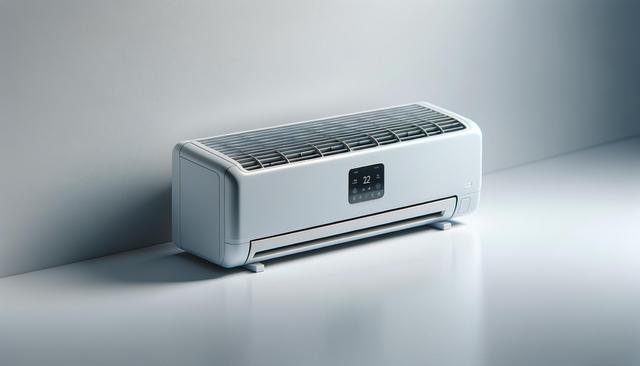Understanding How Ductless Air Conditioners Work
Ductless air conditioners, also known as mini-split systems, operate by connecting an indoor air-handling unit to an outdoor compressor through a small conduit. This conduit houses the power cable, refrigerant tubing, suction tubing, and a condensate drain. Unlike central air systems that rely on extensive ductwork to circulate air, ductless systems deliver cooled (or heated) air directly into different zones or rooms. This setup allows for more targeted climate control and can be more efficient in certain scenarios.
The indoor unit is typically mounted on a wall or ceiling and is sleek in design. The outdoor unit, meanwhile, is installed outside the building. The system works by extracting heat from the indoor air and transferring it outside, or vice versa when in heating mode. Since air doesn’t travel through ducts, there’s less energy loss, which contributes to better efficiency and lower utility bills.
Key Benefits of Going Ductless
One of the main advantages of ductless air conditioners is their energy efficiency. Traditional ducted systems can lose significant energy through leaks and poor insulation in the ductwork. Ductless systems eliminate this issue, offering direct and efficient cooling and heating. Some other notable benefits include:
- Easy Installation: Ductless systems require only a small hole in the wall for the conduit, making them less invasive to install than ducted systems.
- Zone Control: Each indoor unit can be controlled independently, allowing users to customize temperature settings for different rooms.
- Improved Indoor Air Quality: Without ducts to collect dust and allergens, ductless ACs can contribute to cleaner indoor air.
- Quiet Operation: These systems generally produce less noise compared to traditional HVAC systems.
These benefits make ductless air conditioners a popular choice for homeowners looking to upgrade or add climate control to specific areas, such as additions, basements, or rooms that are difficult to cool with a central system.
Ideal Scenarios for Ductless Systems
Ductless air conditioners are particularly well-suited for certain types of buildings and use cases. For instance, homes without existing ductwork can benefit significantly from a ductless system, as retrofitting ducts can be expensive and time-consuming. They are also ideal for:
- Home additions or remodeled spaces where installing ducts is impractical
- Older homes with limited space for ductwork
- Garages, attics, or basement rooms used as living areas
- Multi-family homes or apartments where individual climate control is needed
Another advantage is their scalability. Homeowners can start with one or two units and expand the system over time. This modular approach provides flexibility and allows for a more manageable investment spread over time.
Maintenance and Longevity Considerations
Maintaining a ductless air conditioner is relatively straightforward, but regular upkeep is essential to ensure optimal performance and longevity. The filters in the indoor units should be cleaned or replaced regularly to maintain air quality and efficiency. Outdoor units should be kept clear of debris, and the system should be inspected annually by a qualified technician.
With proper care, ductless systems can last up to 20 years. Their components are generally durable, but like any appliance, wear and tear can affect performance over time. Some maintenance tips include:
- Cleaning filters every month or as recommended by the manufacturer
- Checking refrigerant levels during annual inspections
- Ensuring the outdoor unit is not obstructed by plants or debris
- Monitoring for unusual noises or reduced performance, which can signal a need for service
Staying on top of these tasks can help you avoid costly repairs and extend the life of your system.
Cost and Efficiency Considerations
The upfront cost of a ductless air conditioner may be higher than some traditional window units or basic split systems, but the long-term energy savings can offset the initial investment. Because they use inverter-driven compressors, ductless systems adjust their output to match the cooling or heating demand, which results in less energy consumption and more consistent indoor temperatures.
In addition, many utility companies offer rebates or incentives for installing energy-efficient HVAC systems, including ductless models. These programs can help reduce the overall cost and make the switch more financially attractive. When evaluating the overall cost, consider:
- Installation costs, which vary depending on the number of indoor units
- Energy savings over time due to higher efficiency
- Potential tax credits or utility rebates
- Maintenance and repair expenses
Overall, a ductless air conditioner can be a sound investment for those looking to improve comfort and efficiency in their homes without the complexity of ductwork.
Conclusion: Is a Ductless Air Conditioner Right for You?
Ductless air conditioners offer an efficient, flexible, and often cost-effective alternative to traditional HVAC systems, especially in buildings where duct installation is not feasible. Their ability to provide zoned comfort, along with easier installation and lower energy loss, makes them well-suited for a variety of residential and light commercial applications. For homeowners seeking a modern solution to indoor climate control, and willing to invest in long-term energy savings, a ductless system is a practical and reliable option worth considering.







